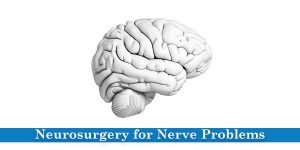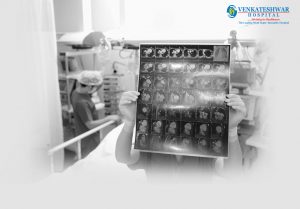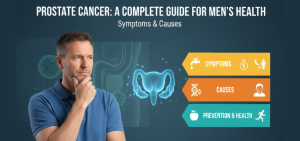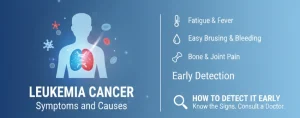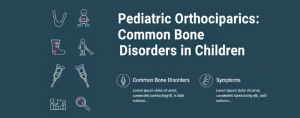Parkinson’s disease is a progressive neurological disorder that primarily affects movement. According to research, over 1% of people above 60 develop Parkinson’s, and early symptoms often go unnoticed because they can resemble normal ageing. Recognising the early signs of Parkinson’s, such as subtle rest tremors, stiffness, or slower movements, allows for timely evaluation, which can improve symptom management and help maintain daily functioning for longer.
At Venkateshwar Hospital, our neurologists provide expert assessment for early Parkinson’s, including detailed evaluation of movement, coordination, and cognitive function. Diagnostic support, like MRI and EEG, helps confirm clinical findings, enabling targeted care and guidance for managing the condition effectively.
What is Parkinson’s Disease?
Parkinson’s disease occurs when specific nerve cells in the brain, particularly those producing dopamine, deteriorate over time. Dopamine is a chemical messenger that primarily regulates movement, while mood and coordination changes are secondary non-motor effects. Low dopamine levels lead to the motor and non-motor symptoms associated with Parkinson’s disease.
While the exact cause remains unclear, factors such as age, genetics, and environmental exposure to toxins may contribute. Parkinson’s disease typically affects people over the age of 60, although a younger onset is possible in rare cases. The disease is progressive, meaning symptoms worsen gradually over the years.
Also – When Should You See a Neurologist? Warning Signs You Shouldn’t Ignore
Early Symptoms of Parkinson’s Disease
Here are the early signs of Parkinson’s disease that may appear and indicate the need for medical attention.
1. Tremor
A resting tremor is one of the most recognisable early signs of Parkinson’s disease. It often begins in a hand, foot, or even the jaw and occurs when the limb is at rest. The tremor is rhythmic and persistent, sometimes described as a “pill-rolling” movement of the fingers.
2. Bradykinesia (Slowness of Movement)
Bradykinesia makes routine tasks slower and more difficult. Actions like buttoning clothes, standing from a chair, or walking may take extra effort. This slowness often prompts people to seek medical attention.
3. Rigidity (Stiffness)
Muscle stiffness can occur in the arms, legs, or trunk. It often causes discomfort, cramps, or reduced range of motion. Unlike temporary stiffness after exercise, this rigidity persists and interferes with daily activities.
4. Postural Instability (Balance Issues)
Balance issues and a stooped posture may develop later in Parkinson’s disease. While they are less common in the early stages, they become significant concerns as coordination declines, increasing the risk of falls.
Other Early Signs of Parkinson’s Disease
Other early signs of Parkinson’s disease can also appear gradually and may help in recognising the condition sooner.
- Micrographia (Changes in Handwriting): Writing becomes smaller, cramped, or challenging to read.
- Loss of Smell (Anosmia): Difficulty recognising everyday odours such as coffee or soap.
- Sleep Disturbances: Restless legs, vivid dreams, or acting out movements during sleep.
- Constipation: Ongoing difficulty with bowel movements unrelated to diet or lifestyle.
- Changes in Voice: Speech may become softer, monotone, or slurred.
- Masked Face: Reduced facial expressions or less frequent blinking, often mistaken for sadness.
When to Consult a Neurologist?
You should consider consulting a neurologist if:
- Symptoms are persistent and gradually worsening.
- Motor issues such as tremor or stiffness begin interfering with daily activities.
- There is a family history of Parkinson’s disease or related neurological conditions.
- You notice unexplained motor changes without an apparent cause.
Note: While overall health and mobility changes may occur, they are not a standalone trigger for consultation; the focus should be on persistent motor or non-motor symptoms.
Diagnosis of Parkinson’s Disease
There is no single test to confirm Parkinson’s disease. Diagnosis relies on a combination of medical evaluation and clinical observation by a neurologist. At Venkateshwar Hospital, our experienced neurologists follow a structured approach to ensure accurate assessment:
- Medical History Review: Includes family history, medication use, and other health factors.
- Neurological Examination: Assessment of reflexes, coordination, tremor, stiffness, and posture.
- Cognitive and Symptom Observation: Evaluating memory, attention, and non-motor symptoms.
- Imaging Tests: Scans such as MRI or DaTscan may be performed to rule out other conditions rather than confirm Parkinson’s disease directly.
Importance of Early Diagnosis
Recognising the early signs of Parkinson’s can make a significant difference in managing the disease and preserving quality of life.
1. Timely Medical Intervention
Early diagnosis allows prompt treatment with medications and therapies, helping manage both motor and non-motor symptoms effectively.
2. Maintaining Independence
Starting treatment early provides the opportunity to stay active, preserve mobility, and adapt daily routines to maintain independence.
3. Planning for the Future
Early recognition helps patients and families plan lifestyle changes, support systems, and care strategies for the long term.
4. Clinical Trials and Emerging Treatments
While early recognition may improve consideration for clinical trials, participation depends on eligibility criteria rather than diagnosis alone.
Also Read – Neurosurgery: Advanced Techniques for Nerve Problems
Conclusion
Recognising the early signs of Parkinson’s disease is essential for timely medical intervention. While the condition cannot be cured, early management can help maintain independence and improve quality of life. Consulting a neurologist at the first signs of persistent symptoms, such as those available at Venkateshwar Hospital, ensures a detailed evaluation including medical history review, neurological examination, cognitive and symptom assessment, and appropriate imaging. This approach allows for a personalised care plan with targeted therapies and lifestyle guidance, supporting effective symptom management and long-term well-being.
Frequently Asked Questions
1. What is the first noticeable symptom of Parkinson’s disease?
The first noticeable symptom for many people is a resting tremor in one hand or finger. Others may notice slowness of movement (bradykinesia) or changes in handwriting before tremors appear.
2. Is Parkinson’s disease hereditary?
Most cases are not inherited. However, in some families, certain genetic mutations can increase the risk. Lifestyle and environmental factors usually play a bigger role.
3. Can Parkinson’s disease symptoms be reversed?
Currently, symptoms cannot be reversed. Treatments focus on managing and slowing progression using medicines, physiotherapy, and in some cases, surgical options like deep brain stimulation.
4. At what age does Parkinson’s disease typically start?
Parkinson’s disease most commonly begins after the age of 60, although early-onset Parkinson’s can occur in people under 50.
5. How long can someone live with Parkinson’s disease?
With proper management, many people live for decades after diagnosis. Parkinson’s disease itself is not usually life-threatening, but complications in later stages may affect overall health.
6. What are the first warning signs of Parkinson’s disease?
Early signs include tremors, muscle stiffness, slowed movement, loss of smell, constipation, and changes in handwriting or voice. These symptoms often appear gradually.
7. What specialist should I see if I suspect Parkinson’s disease?
Consult a neurologist, ideally one specialising in movement disorders. They can assess symptoms and recommend treatment options.
8. Does early Parkinson’s disease affect mental health?
Yes, anxiety, depression, and changes in mood or sleep patterns can occur even in the early stages. Addressing both physical and emotional health is important.
9. Can lifestyle changes help with early Parkinson’s disease symptoms?
Yes. Regular exercise, a balanced diet, quality sleep, and staying socially active can support better symptom management and improve overall well-being.
Medically Reviewed by — Dr. Dinesh Sareen (Director – Neurology)





